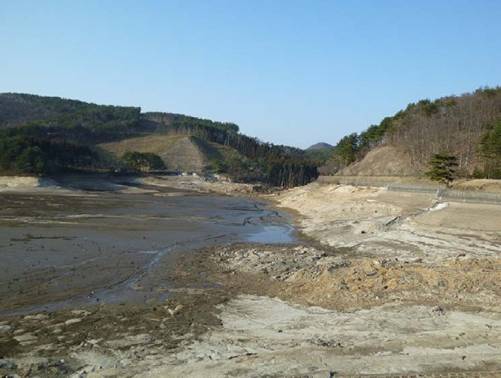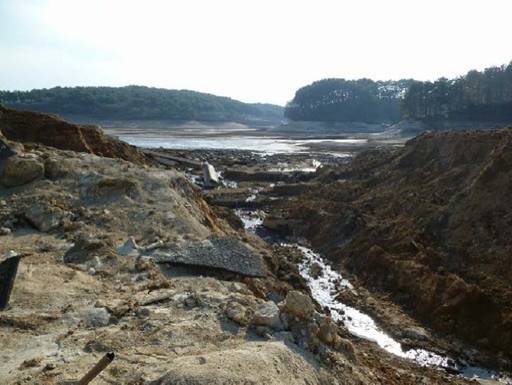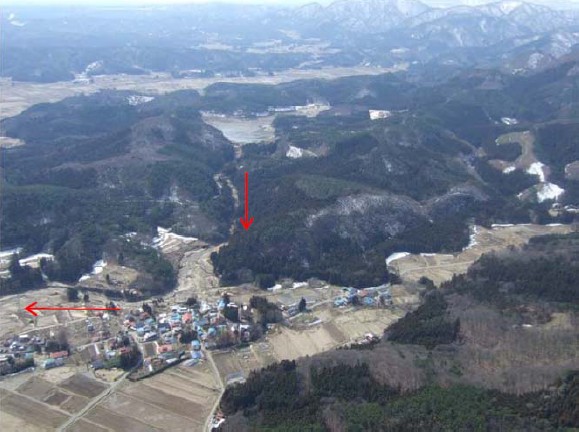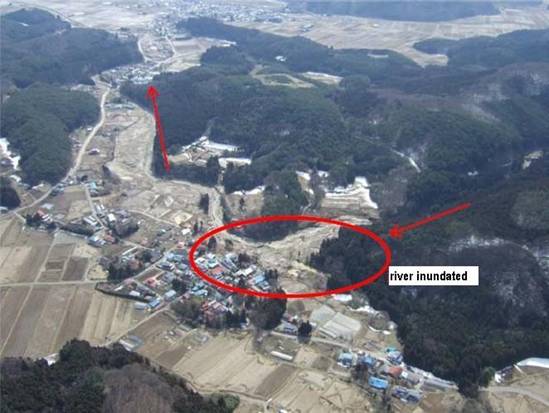As of March 31, more than 400 dams were inspected. They withstood severe ground motions and retained the water, although several dams suffered minor or moderate damage.
One water retaining structure for irrigation failed. Fujinuma-ike was an 18.5 meter high earthfill structure. It was breached shortly after the earthquake. It is located in the Fukushima Prefecture of North East Japan. The epicentral distance is about 240km and the shortest distance to the fault is about 80km, in case the NIED fault model1 is employed. The accelerometers were not installed at the site. The attenuation relationship obtained from NIED strong motion network indicates that PGA at ground surface of the same fault distance is around 0.2 to 0.7g. According to the local officials of the irrigation department, 8 people were dead. In the previous report, the number of dead people was described as 9, but it was wrong. The outline of the structure follows:
Height: 18.5 m
Crest length: 133 m
Crest width: 6.0 m
Reservoir Capacity: 1.5 million m3
Spillway: ungated
Construction began in 1937 for irrigation and was suspended during World War 2. It was competed in 1949. When the earthquake occurred, the reservoir level was almost full. According to the witness, 20 to 25 minutes after the earthquake, the water was overflowing on the crest. Later big discharge occurred and it was breached completely as shown in Photos 1 & 2. The embankment had lost the height to retain water. The structure is a homogeneous type and most materials seem to be cohesive soil. The authority concerned will investigate the cause of the failure and make the report public. In Photo 3, red lines indicate the path of flow.

Fig. 1 Typical section

Photo 1 View from upstream toward the Fujinuma-ike (Photo: Mastumoto)

Photo 2 View from downstream toward the breached portion (Photo: Mastumoto)

Photo 3 Arial view of Fujinuma-ike and its downstream area (Photo: NILM)

Photo 4 Water from Fujinuma-ike flooded downstream area (Photo: NILM)
(Based on the information provided by JCOLD on April 4th, 2011)







